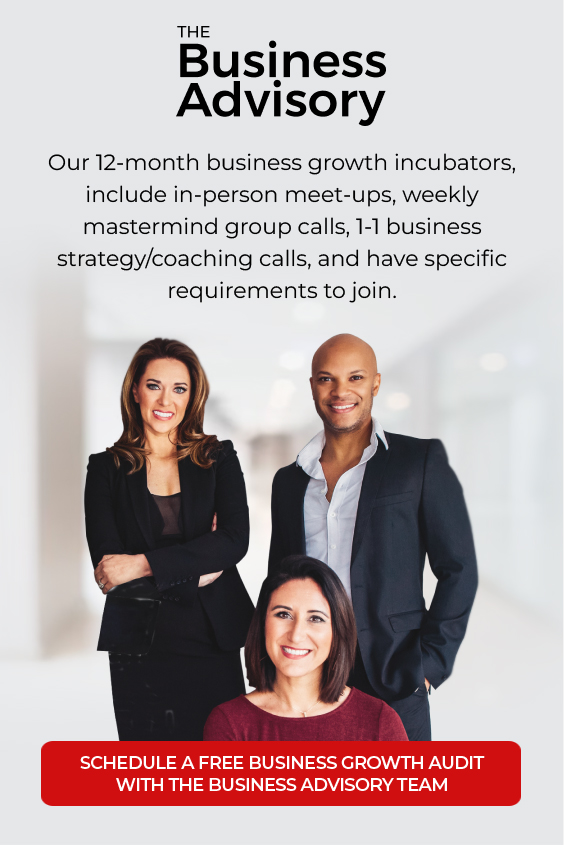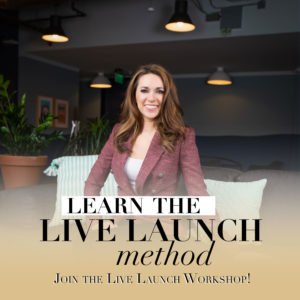A lack of profitable sales is the #1 reason why most businesses fail. As a service provider, your sales success hinges on the number of consultations you are booking and closing each week in order to reach your sales targets – it’s the most critical metric to drive results in a service-based business.
So, how do you ensure you are effective at generating revenue and staying profitable?
We recommend using a consultative sales approach, particularly when selling a high ticket offer, service or package.
Rather than “pushy car salesman” tactics, relationship-based consultative selling allows you to build rapport with prospects, get to know their true needs and pain points, and “diagnose” their problems with your unique solution.
What is consultative selling, and why is it important for sales success?
Premium buyers are looking for custom solutions and high-touch, human connection when making a large investment.
That’s why when it comes to high ticket sales, it’s important to have a relationship established with the person you’re selling.
Consultative selling allows you to build rapport with your potential clients, diagnose their problems, and position your offer as a solution to their needs.
The Key Elements of consultative selling
There are 4 things you want to measure in the sales process:
- Touches
- Connect calls
- Consultation calls
- Closes
Touches: Actions that create interaction with your market – this can be something you do or that your team manages.
Examples: Direct messages, social media posts, or live streams.
It’s important to understand how many touches it takes to get someone interested in talking to you.
Connect calls: a short phone call where the objective is to connect with a lead and build the relationship.
This is NOT a sales call – it’s simply an opportunity to understand their needs, and ask appropriate questions that may further qualify or disqualify that person.
One 15-minute connect call can eliminate weeks’ worth of back and forth direct messaging and shortcut the qualifying process.
Consultation calls: a sales call in which you are directly discussing your product, program or service.
The goal of your consultations are to be getting on calls with qualified prospects – every touch and connect call should help you move through the qualifying process and do most of the heavy lifting for you.
Closes: the number of sales you actually close. Working backwards to understand your close rate will determine how many qualified prospects you or your team needs to book consultations with weekly in order to reach your sales target.
Example: if one out of every two prospects you speak to ends up enrolling in your program, you have a 50% close rate. If you sell a $10K program, and your revenue goal for the month is $100K, that means you need to make 10 program sales. Because you have a 50% close rate, you need to book consultations with at least 20 prospects to reach your sales target.
Leveraging these 4 strategies in consultative selling (as well as incorporating them into your team sales training) will allow you to build the relationship over time, keep prospects moving through the buying journey, and keep you top of mind when they’re ready to make a buying decision.
Building rapport with customers: strategies to help you establish trust and familiarity
People buy from people they can relate to, people they like, or people they want to be like.
Your immediate goal upon connecting with a prospect: get to know them. Do your research so that when it’s time to get on the phone with them, you’re able to create a sense of connection.
Ultimately, consultative selling should be thought of as nothing more than simply being of service. When you understand this concept, you will make the sales process feel that much more authentic.
You’re not trying to convince someone to buy something they don’t want or need; you’re simply offering a solution that’s going to improve their life in some way, shape or form.
When selling high ticket services, especially in 2023, the buying cycle is typically longer than if someone were to buy a low ticket course or product from you. While those sales don’t usually require a consultation, high ticket sales do.
While that’s not the case 100% of the time (there will always be cases of a surprise lead finding you, booking a call and closing right away), it’s important to understand how the follow-up and nurture will play a key role in your sales success.
What does that mean?
Consider having a process in place for ensuring all of your qualified leads are being interacted with at least weekly.
That doesn’t mean constantly direct messaging them on social media. There are a ton of ways you can stay top of mind, build rapport and establish trust and familiarity with leads. Some examples include:
Forwarding them an email they might find useful or relevant, based on previous conversations you’ve had about something they’re struggling with.
Example: Happy Monday! Just got this from Hubspot’s Marketing Blog and remembered you telling me you were looking for something like this. Thought it’d be useful for you!
Why it works: sending relevant content adds value to their life or business, and also shows that you remembered something they told you in a previous conversation.
Tagging them in a helpful or inspirational post in the comments section (use this sparingly, and don’t mass-tag prospects in one post. Make it personal!)
Example: @NAME, thought of you as soon as I saw this list – thought #4 might resonate based on our last chat :)
Why it works: this not only adds value to them, but shows they are top of mind for you.
Interacting with their social media posts (yes, even when it’s not directly related to doing business) – leaving a comment or even swiping up on a story.
Example: Your trip looked like such a wonderful time! My husband and I have had Italy on our list for awhile. You’ll have to give me all of your top restaurant recommendations!
Why it works: this allows you to get personal with a lead and show them a more human side to you. They don’t feel pressured into a sales conversation, and allows you to build the relationship in the interim.
Sending a gift or handwritten note in the mail.
Example: I wanted to send over a copy of the book I was telling you about; inside you’ll find a comprehensive guide to managing your team’s productivity. Can’t wait to see the progress you make with your team over the next few months! Enjoy :)
Why it works: in a largely digital world, a personal note or gift goes a long way. It stands out from the traditional social media interactions and shows you went the extra mile for them.
Resharing their content to your page if it makes sense.
Example: To all of my entrepreneur friends – @NAME’S 10 Steps to High Converting Landing Pages was a must-read! I’m no copy expert so implementing these steps were a game changer for me. Check out her work!
Why it works: you’re promoting their content and work to your followers, which is helping them increase their visibility. They’ll likely respond back and appreciate the gesture.
How to effectively ask qualitative questions to uncover customer needs and wants
The art of asking questions and actively listening is one of the most powerful elements of consultative selling.
Most of the time, a few great questions will do the heavy lifting for you in terms of qualifying this person.
You can ask questions at various stages of the customer journey: from the moment they opt in, as you progress through touching and connecting with each lead, all the way up to the final consultation call.
For example: including qualifying questions on your Facebook group or on a lead magnet opt-in.
We recommend using open ended questions to prompt more thorough answers that can help you determine whether or not you have the solution this person is booking for; and that this person is a qualified lead.
Some questions to consider asking are:
- Tell me about the last investment that you made in BLANK – how did it go? This question will typically give you insight on whether or not they’ve made a significant investment in the past, as well as an understanding of why they did or did not get a return. Did they fail to take action? Did they invest in a not great program? Past behavior many times dictates future behavior, so it’s helpful to gain insight on their investment history.
- What problem are you most urgently looking to solve right now, and what’s your timeline on that? This helps determine whether or not they are looking to invest now or down the road.
- What brought you to BLANK? This works for a workshop, a social media follow, or even a booked meeting. Simply thanking someone for taking the time to follow you or to register for a free event and asking what they are seeking out can give you insight on some of their problems and pain points.
- We work really hard to produce content that is going to meaningfully impact your life – what can we send to you today that would make a difference for you? Taking the time to ask what they specifically need, and sending a customized resource as a follow-up, can be a great way to add value and stand out.
Whether it’s via DM, email, or on a quick 10-minute connect call, asking questions throughout the sales process and not just on a consultation call is going to save time and create efficiency for you and your team – the more information you can gather sooner, the more time you will save by weeding out consultations with unqualified prospects.
During sales trainings with your team, encourage them to role play through these questions to improve the flow of their sales conversations and understand how to better overcome objections.
Identifying opportunities to optimize the sales process
Understanding data is a critical component of sales success. As we mentioned before, you want to know metrics such as your close rate, and the number of touches required to get someone on a call. But there are other key opportunities to know and consider:
Lead status and quality: how many qualified versus unqualified leads are in your database – and what was the source? If they came from a cold ad, can you optimize ad copy or creative?
How many new leads are in your ecosystem that have not yet been qualified? If you notice a pool of individuals that are opting in to your newsletter but have not yet been qualified, you might want to take a custom approach and send them a personal email.
Engagement: how many of your leads are actively engaged on your emails, or in your Facebook group? If you know that someone is actively commenting on the content you post, or clicking links in the emails you send out to your list, it can help you reach out more personally, further customizing the sales process.
You might say something like: Hey NAME, I noticed you downloaded the sales templates I sent out yesterday – I’m excited to chat more about how we can optimize your sales process! Do you have some time to jump on a call this Wednesday afternoon?
Script or outreach effectiveness: Does one method of outreach get more or better responses than another? If you send 10 direct messages and 10 voice memos, which one yields a higher response rate?
Data analysis and segmentation: can you segment leads based on certain qualifying data to provide a more customized experience? Maybe you are sending one email template with a resource to a pool of leads who meet a specific criteria; and a variation of that template and different resource to another pool of leads.
Let’s use an example: you target business owners who are looking to develop teams. A qualifying question you might ask is, what is the size of your team? Based on their answers, you may segment people who have part-time contractors from people with more than one full-time employee.
Open rates, click rates, and response rates: are leads interacting with your communications? On average, how many of them are opening and clicking through your emails or text messages? How many are responding?
There are many ways you can analyze and optimize your sales process, but remember: overwhelm often leads to inaction. So, pick a few key KPIs to track and measure, and work on improving those first before trying fix everything at once.
Plus: making too many changes hinders your ability to understand which changes are most effective. So remember: one thing at a time!
Tips for negotiating and closing deals with customers that result in a win-win situation
Consultative selling should always be a win-win for both parties. While of course it’s a win on your part for closing the sale – they should feel the same way for investing in a solution that is going to transform their life in some way, shape or form.
Some things to consider when closing deals quickly, and in high volume:
#1: On a consultation call, try to avoid coaching as much as possible. Your goal on the call is to provide direction and framework that moves that person into decision mode and get them to say “yes” to themselves.
Try to keep consultation calls around 20-minutes long (following our “One Conversation Close” signature sales training method will help you understand how to lead and structure your sales calls with qualified prospects).
The moment you pivot away from consultation into coaching, you are creating a sense of pressure for them to take action and do something before they get started working with you – in turn, “unselling” them.
#2: Develop your nurture assets and nurture strategy prior to scheduling your closing conversation with a prospect, to make closing the deal that much easier.
Consider creating case studies and testimonials to build authority, downloadable resources, templates, or podcast episodes to have handy to add value and build credibility and rapport, and find ways to educate them on your services, expertise, and clientele beforehand.
#3: If you want to sell more, speak less.
Sales is not about having the “perfect pitch.” In fact, it’s more about listening than it is talking. The better questions you can ask prospects, the more likely it is that you’ll be able to close them – because you’ll be able to position your offer as the solution to their specific needs and pain points, and consult them through the resistance or objections that come up.
Common sales mistakes business owners make – and how to avoid them:
Even the most successful business owners make mistakes in the sales process – here are a few we see often:
#1: The business owner is the only salesperson.
Surprisingly, many business owners don’t even consider hiring a sales team, when the reality is: a rock solid sales team is the key to closing clients rapidly, and in higher volume than if you were taking 1:1 sales calls on your own.
Our client, Shameca Tankerson, quickly realized upon joining our program that she was the bottleneck to her own growth by continuing to be the primary salesperson in her million-dollar company – leaving millions of dollars on the table.
After working with our team, she was able to begin strategizing around building out a sales team that can help her achieve next-level success and profitability.
In other cases: business owners tend to hire additional staff and create even more pressure on themselves to generate sales and cover the cost – and a sales representative isn’t one of them. The issue is not that they aren’t making enough sales – it’s that they’re hiring the wrong positions.
If you find that your focus and attention is scattered across a ton of different contractors or outsourced services, it might be time to simplify. Instead, you may be bette
r served by hiring one full-time “right-hand” employee to assist you with consultative selling and marketing.
Are you ready to start expanding your dream team? Download Bigger Than You: The Entrepreneur’s Guide to Building an Unstoppable Team for FREE by clicking here.
#2: The business owner is not effectively managing their sales team.
When we find a struggling business that does have a sales team in place, we find that the team is typically not being given the right sales training, support or structure needed to meet expectations.
You don’t need to be the greatest salesperson in the world to successfully manage a sales team, but you do need to become an effective leader.
Sales and leadership are two sides of the same coin – and if you’re someone who struggles to teach and train your team to achieve sales success, or it’s not an area of strength, consider getting your team external sales training and resources.
Inside Legacy Leaders, we support entrepreneurs in mentoring their sales team to achieve productivity, profitability, and growth.
#3: You (or your sales team) are spending too much time on unqualified prospects.
If you are frustrated that your social seller isn’t closing sales, or you find yourself on call after call with someone who doesn’t have the money or isn’t ready to buy – you need to narrow in on your qualifying process.
The key to protecting your energy is protecting your time, and yo udo this by qualifying leads as much as you can on the front-end of your sales process, so that you can ensure you are devoting time on your calendar only to people who are qualified to be having a sales conversation and ready to buy.
Our client, Debra Maldonado, was experiencing this with her social seller. With one small shift in strategy and really honing in on qualified target prospects, they were able to generate $260K in one month – their best revenue month to date.
Conclusion
Consultative selling is a proven way to increase conversions for your high ticket offer when done right.
At The Business Advisory, we support entrepreneurs not only in dialing in their sales systems, but also with building brand rapport and credibility, and building teams to scale.
If you are interested in direct mentorship with our team, you can learn more about our programs by booking a call with our team here.











